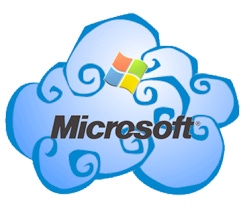August 2, 2012

By samdizzy

microsoft-cloud
When Microsoft (NASDAQ: MSFT) announced Outlook.com (the Hotmail replacement brand), it was the latest example of the software giant leveraging an old brand to expand Microsoft’s cloud services strategy. So far, I like the strategy — which includes Outlook, Office 365 and Windows Azure. But it also begs the question: Does Microsoft still know how to launch entirely new brands — especially in the age of cloud computing and mobility?In some ways, Microsoft has struggled with branding in recent years. Two prime examples that triggered acronym headaches:
1. BPOS Confusion: Anybody else remember the horrid BPOS (Business Productivity Online Suite) brand? The full name failed to describe BPOS. Plus, the initial BPOS cloud — containing early versions of Exchange Online, SharePoint Online and more — suffered frequent outages.
Microsoft in June 2011 replaced BPOS with the Office 365 brand and cloud launch — a new twist on the classic software productivity suite brand. It instantly communicated year-round reliability, even if Office 365 occasionally goes dark. Now, Microsoft is blurring the lines between its next desktop suite (Office 2013) and cloud services. Ultimately, I think all of Microsoft’s “desktop” productivity software will become part of the Office 365 cloud.
2. Microsoft OCS: Short for Office Communications Server. Was this a hosted version of Office (Word, Excel, PowerPoint) or some sort of chat service or something else? Yes, I know the answer — as do most Talkin’ Cloud readers. But the OCS brand never really caught on with the broader market and technology neophytes. Microsoft replaced OCS with Lync, announcing the new brand in September 2010.
Admittedly, Lync still requires some explaining — but at least the name is short and sweet. No more ugly acronyms to worry about.
Why the Acronyms
Those two examples offer two lessons for Microsoft’s cloud brands.
First, avoid the temptation to use a name that ultimately generates an acronym. Instead of having one unknown brand (Business Productivity Online Suite) you frequently wind up with two (Business Productivity Online Suite and BPOS).
Second, sometimes tomorrow’s best brands are built atop your existing brands. Office extends to Office 365. Windows (desktop and server) extend to Windows Azure.
Still, I worry a little bit about that second point. Microsoft built/extended some great brands in the 1990s (Windows, Office, Word, Excel, PowerPoint, Exchange Server, etc.). But in the past decade how many really great brands has Microsoft built?
Think of it this way: My kids know and love Xbox Live. But they know little else about Microsoft. CEO Steve Ballmer needs to change that. Repackaging old brands for cloud markets won’t be enough.
You May Also Like
